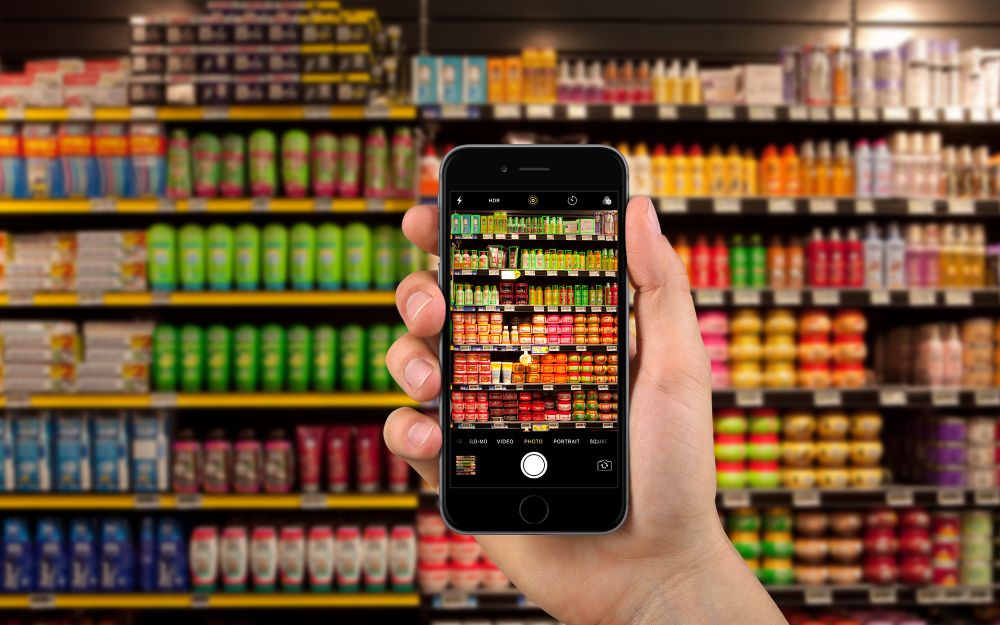Feb 22, 2018 9:00:00 AM

Checking the fridge repeatedly when you know no snacks will appear.
Spending two hours counting boxes of tea on a shelf to secure a better product placement next time.
Both of these are pointless behaviours that don’t take concrete steps towards the desired outcome: ordering pizza to satisfy your snacking urges, or using data to increase sales.
AI can solve one of these problems.
Sadly, it’s not the pizza one, although it would be a dream if AI could order pizza based on the frequency of trips back and forth to the fridge.
Field sales teams for brands and manufacturers secure product placements that drive sales in-store. They check if stores are compliant with the merchandising and planogram agreements brands pay for.
For a job this important, their day-to-day is pretty exhausting.
But image recognition technology has already started changing this. Here’s how:
Image Recognition (IR) saves time and improves accuracy.
Field sales teams count product facings to calculate share-of-shelf and track store compliance with merchandising agreements.
Sure, this sounds a bit mundane but easy enough. But let’s imagine a field sales rep for a big food brand is visiting all the grocery stores in a city. Our sales rep has to calculate share-of-shelf for 15 different sub-brands, and has 7 stores to audit that day.
That’s a lot of counting, and if our field rep is pressed for time they won’t do the counting at all. Brand HQ will have no idea what’s going on in stores.
We haven’t even started with the recounting because shoppers keep interrupting our field rep to ask them which aisle the bin bags are in.
Wait, was that 8 cans of soup or 11? It was probably 11 (it was definitely 8 and now the share-of-shelf calculation is completely skewed).
With IR, our field rep can capture all the data they need in one picture, with 0 chance of human error. The hours they’ve saved from getting rid of manual counting can be spent negotiating for better product placements and building relationships with store teams.
IR makes field teams results-driven instead of process-driven.
Does placing your brand’s tea beside one competitor but not the other have zero impact on sales? What about 8 product facings instead of 10?
50% of the answer is hiding in the tea shelf. It just needs to be extracted via IR and cross-referenced with sales data.
IR enables brand and manufacturer HQ to determine which field rep operational tasks drive sales and which don’t.
When field teams are aware of this, they can focus on tasks that drive results and increased sales, not just counting and compiling reports in their cars.
IR incentivizes field teams to perform better.
Field sales teams make commissions on the placements they negotiate with store teams.
But with no data about which placements drive sales, trying to secure the best placements to get that big bonus cheque is a bit like being blindfolded.
Sales reps will negotiate smarter and with more confidence if they’re certain the placements they secure will drive results.
Cross-referencing IR and sales data gives reps certainty that the placements they’re negotiating will drive more sales for the retailer, too.
Sales rep A negotiates 10 product facings. Sales rep B negotiates 8. If 8 facings drives more sales, why should rep A get more commission?
Reps who secure the best performing placements should receive the most commission. Looking at the data gives brands the authority to tell stores what works and what doesn’t. It gives them the power to create commission plans for reps that reward good performance.
Everyone wins. Field reps are incentivized to secure better placements. Brands make more sales. Retailers generate more revenue.
So let the shelves talk and reveal the data and patterns that have been hiding for so long. It means no more hours of endless box counting and pointless negotiating, and no more decisions with uncertain outcomes.
---
With YOOBIC’s image recognition technology, field teams can calculate share-of-shelf, number of facings and product proximity, all by taking a picture. Take the headache out of measuring KPIs - request your free personalized demo below!
You may also like
Search the blog
Subscribe to our Blog
Posts by Topics
- Retail (129)
- Employee experience (91)
- News & Trends (68)
- Training & learning (68)
- Operations (62)
- Employee engagement (45)
- Communications (31)
- Customer experience (22)
- Restaurants (20)
- Marketoonist (10)
- case study (7)
- What's new (3)
- AI (2)
- Grocery retail (2)
- YOOBIC team interview (2)
- Loss Prevention (1)













